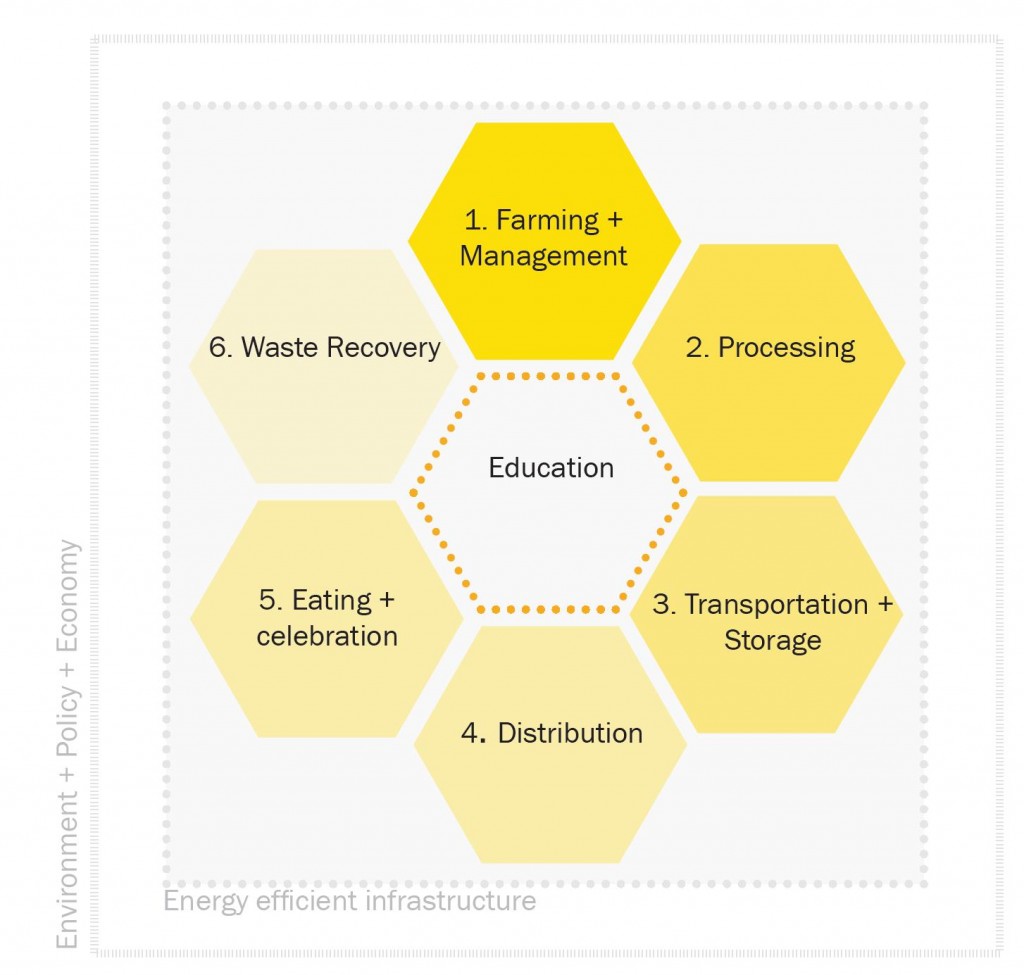A food system is the cycle of farming, processing, transporting, distributing, celebrating, and recovering food waste in the context of larger natural, social, political, and economic driving forces. Sustainable food systems are energy efficient, protect ecosystems, enhance local economic development opportunities and build community. While re-localizing food systems is an important element of sustainability, AU considers the full spectrum of opportunities for building healthy food systems. For example, moving goods on a light rail system would be able to meet market demands for exotic items while being more energy efficient. Sustainable food systems are not just about local farming, they are about resiliency of the farm system in the context of the major driving forces such as the energy crisis, peak oil, food security, and development pressure on farm land.
Food system elements include:
Production + Farming: The practice and profession of growing/raising food and fiber crops and livestock for the purpose of individual to collective sustenance. Land stewardship and management styles vary widely in their relationship with the surrounding environments. Industrial agriculture refers to a conventional model of large sized farms usually growing one crop (e.g. corn, wheat, soy) and use specialized seeds, pesticides, fertilizers… There are many forms of alternative agriculture that are often referred to as sustainable. Sustainable agriculture refers to low-input, intensive-ecologically focused farming that requires a high degree of land stewardship and connection to the land and its surrounding context.
Processing: Processing involves the turning of agricultural goods into food and fiber products for multiple scales from household sustenance to large centralized wholesale distributors.
Distribution, Transportation + Storage: After agricultural crops have been turned into a wide range of food goods they are transported via plane, train, truck and boat to their retail locations. The distance food travels ranges from less than 100 km to over 15,000 km. The longer food travels the more energy goes into the storage and refrigeration of the fresh goods.
Retail and restaurants: Grocery stores, farmers markets, corner stores, road side stands, and big box stores are all distribution centres for food. This is the point in the food system where people purchase their household food items (that they have not grown themselves already). Restaurants and cafes are a key component of the daily life of many people where they access their food and these need to be present to supply that need.
Education: The education of farmers and all people in the food industry, as well as the provision of informal cooking and gardening education is central to a thriving local food system.
Consumption, Culture + Celebration: The practice of preparing, eating, and celebrating food is central to a great community and a great quality of life, and one that assists in building knowledge and support for local food systems.
Waste Recovery: Is the method of disposing or reusing of left over/waste food items. These methods vary and range from backyard composting to landfilling. Waste recovery also refers to the refuse caused by the packaging of food goods and items that are deemed unsellable such as asymmetrical fruit.
